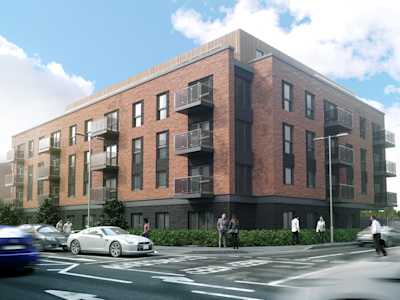UK property attractive to overseas investors
Overseas investors sustain interest in UK property
Number of overseas landlords who own UK property at a five-year high
Since the EU referendum, there has been a 19% increase in overseas landlords investing in property in the UK, taking the total current total to 184,000. Between the vote to leave the EU and the Brexit deal, the pound lost some of its value resulting in a more favourable exchange rate which overseas investors capitalised on. Since 2018 up to 57% of homes in prime central London were snapped up by overseas buyers, and EU buyers bought 19% of properties over the second half of 2018. It is now estimated that overseas investors own as much as 36% of properties in Greater London.
The appetite for UK property from overseas investors is expected to remain strong for the foreseeable future, especially as Britain has started offering Hong Kong nationals a new visa offering for British citizenship. In recent years, people from Hong Kong have invested heavily in the UK’s buy-to-let market, and the number is expected to rise even further with the new visa opportunities. It is not just citizens from Hong Kong who have a sustained interest in UK property investment. In the past year foreign investment from India rose by 3% and 1% from Russia.
What does high overseas demand mean for future investors?
Whilst such an active market is good news for those looking to sell their property, how is a large pool of buyers a good sign for potential investors? Overseas investors have been attracted to the resilience of the UK property market. Despite a pandemic and economic uncertainty caused by Brexit, property prices have risen steadily. According to figures from the Land Registry, in January of 2016, the average house price in England was £220,361. In January 2021 average house prices are £266,532 – a 20.9% increase over five years.
Although there have been tax changes made in the sector and an extra 2% stamp duty charge is now levied on international investors (since April 2021), there is still profit on residential property to be made in terms of capital growth if the right area is chosen.
Download our free buy-to-let guide to learn more!
What has caused house price growth in the UK?
Price increase has been underpinned by demand which is high because of interest from home and international investors, population increases (and an aging population), a shift in household make up and a lack of supply. Estimates have suggested that around 345,000 new homes need to be built in England per year to satisfy demand. In the year 2019/20, England’s total housing stock increased by 244,000 homes which – although a 1% increase on the year before - is still a shortfall of 101,000.
The Autumn Budget 2017 set out the target of delivering 300,000 new homes a year in England, but the manifesto released in 2019 suggested this would not be achieved until mid-2020s. This target, if met, is still below guidelines of what is needed, and there will be a large backlog of homes needed due the shortfall in previous years. For the foreseeable future, this will put more pressure on the supply / demand imbalance.
Start your property journey...
For those who are based overseas and are interested in investing in UK property, why not read our guide for overseas investors buying UK property. Our guide aims to arm investors with knowledge so they can confidently assess potential investment opportunities. Alternatively, UK-based investors can get in touch today to learn more about the fundamentals of the UK buy-to-let maket or to discover the latest buy to let investment opportunities we have available.
Recommended Properties
Related Articles
Are you curious?
Speak with an experienced consultant who will help identify suitable properties that will capture the exciting fundamental mentioned here.
WANT TO LEARN MORE ABOUT PROPERTY INVESTMENT?
SIGN UP TO OUR NEWSLETTER NOW!


